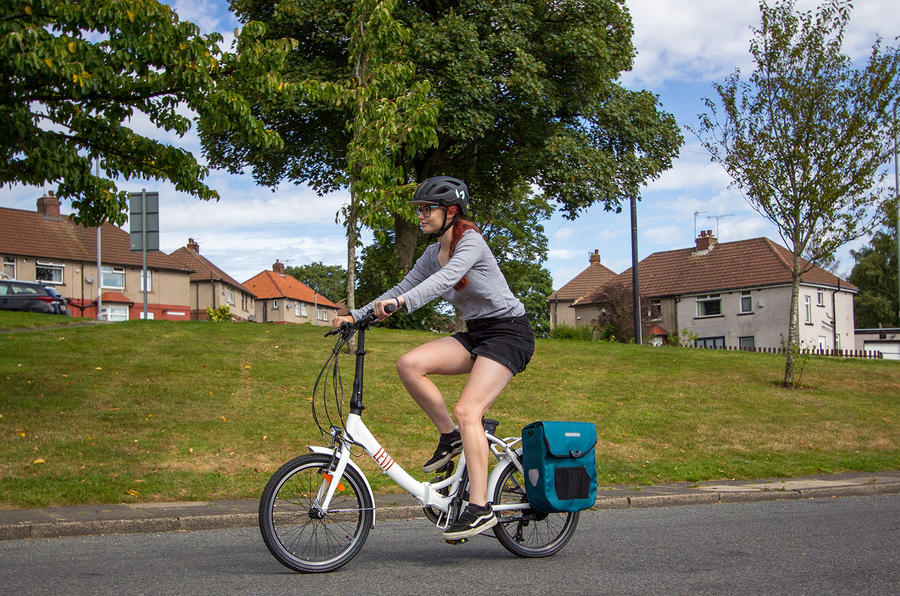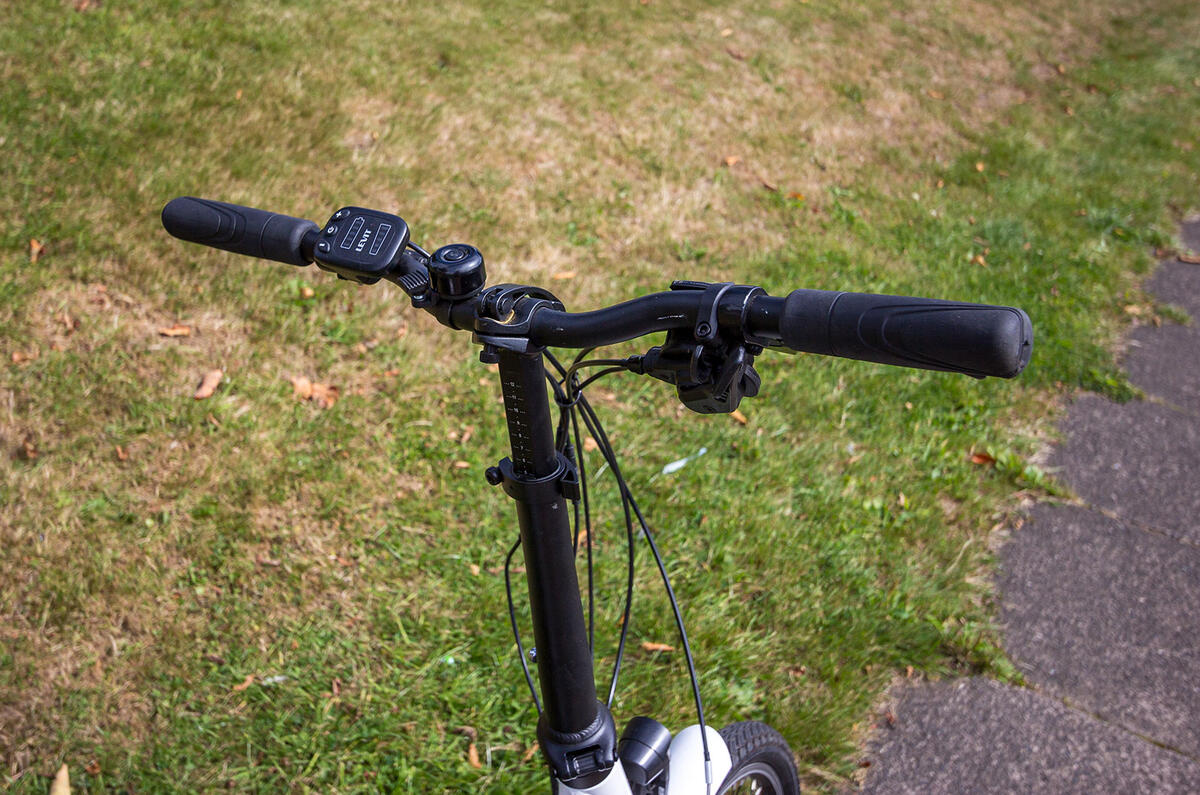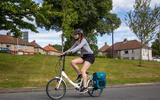Move Electric rating: three stars out of five
What does it cost? £1049.99
What is it?The Levit Chilo 3 374 Wh is a budget folding e-bike, the least expensive of the Chilo range. The Chilo 3 comes with rim brakes and a smaller battery capacity compared to the Chilo 1. Both, however, come with Levit’s HD motor which can provide up to 40 N m of torque.
What is it like? Designed for the urban environment, I worried the hilly terrain in my local area would prove too much for the Chilo – I could not have been more wrong. Bizarrely, it works better on an incline than it does on the flat. Riding along on a flat road the bike struggles to reach 13 or 14 mph. I'm not entirely sure why, as it genuinely feels quite fast uphill, but it's something to bear in mind if speed is a reason you're looking at the bike.
Another reason I struggled with speed on the flat is that I felt the bike was somewhat under geared. The 14-28 cassette paired with the 42T chainring meant I was rarely using anything outside of the lower half of the cogs.
The gears themselves worked reasonably well, but you have to bear in mind the money you’re paying. At this price point, you won’t get the crisp shifting of electric Di2, but if you can make sure everything is well adjusted then you’ll get them to work reliably.
Subscribe to the Move Electric newsletter
Levit has chosen to use its own brand motor, which sits in the rear hub. It's well suited to the urban environment and provides up to 40 Nm of torque as previously mentioned. It does, however, take almost a full pedal stroke to engage, which if you're trying to set off from traffic lights on a hill can be less than ideal.
The battery is also a Levit product, with the Levit 3 using a 374Wh variation compared to the 630Wh option in the Levit 1. The company doesn’t advertise the battery range, but I got about 20-25 miles out of one charge, depending on the terrain. You can measure the charge through the display, which also shows and controls the assist levels.
Interestingly, the battery level seems to dip from five bars to four almost instantaneously even after fully charging it. It then takes a little while to dip down to three and two, but once the battery light has gone onto the first bar it starts to reduce the power and makes riding it up any hills quite tricky.
There are five assist levels, and I’ll be honest I barely used one and two. Three upwards was where I generally lived, although being aware of the battery life I would turn the assist off completely on a descent to save some range.































Join the debate
Add your comment
I can't read an article about a car company on a car website, but I can read an article about an electric bike.
The world's gone mad.